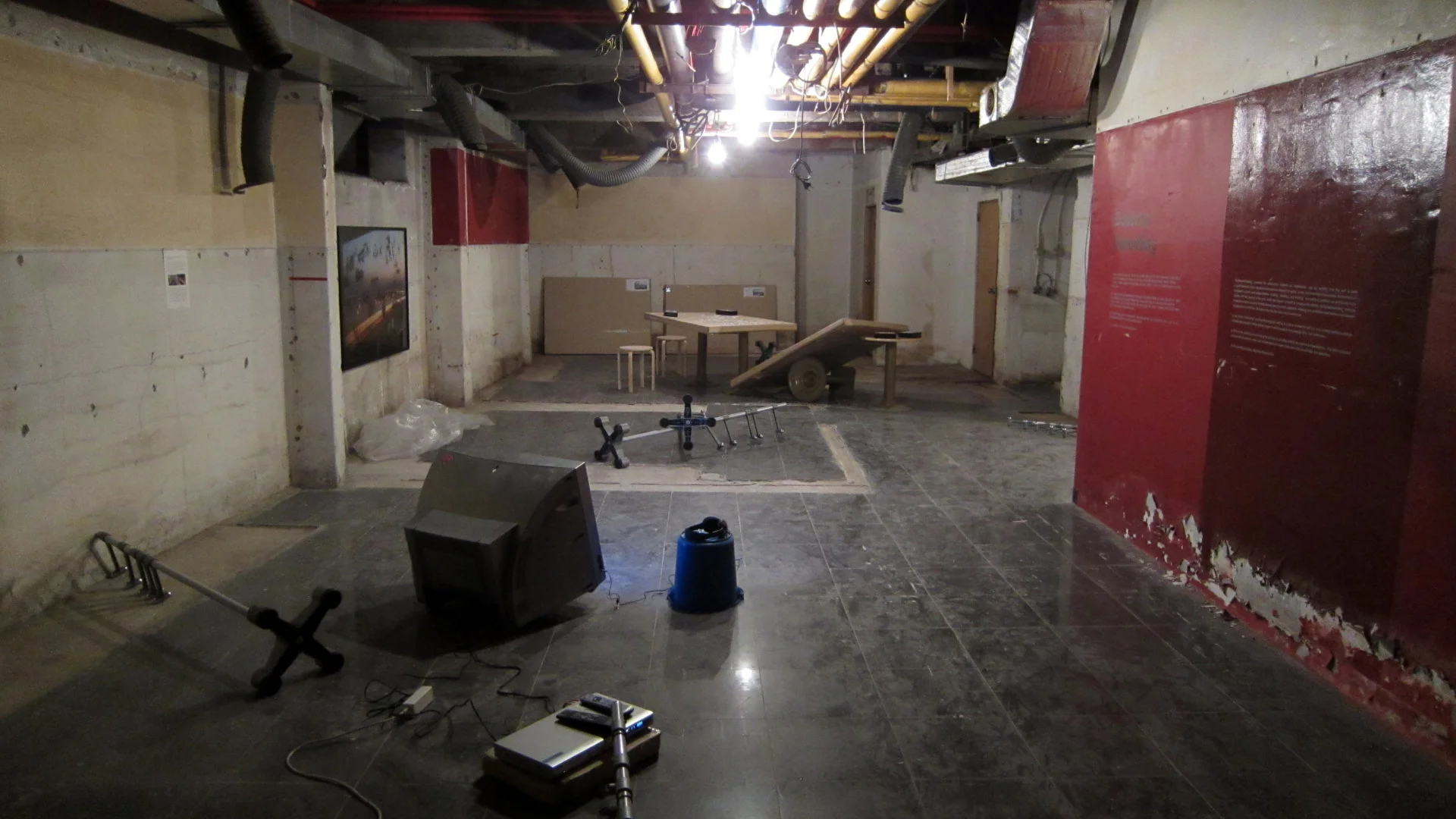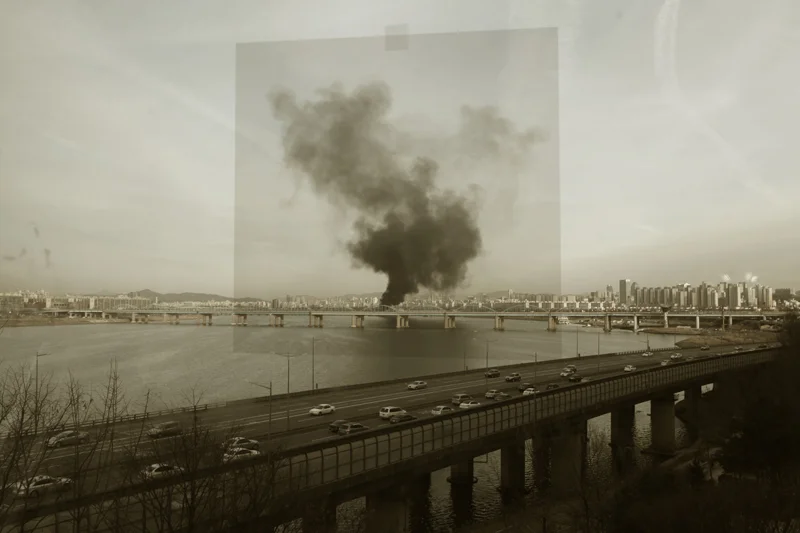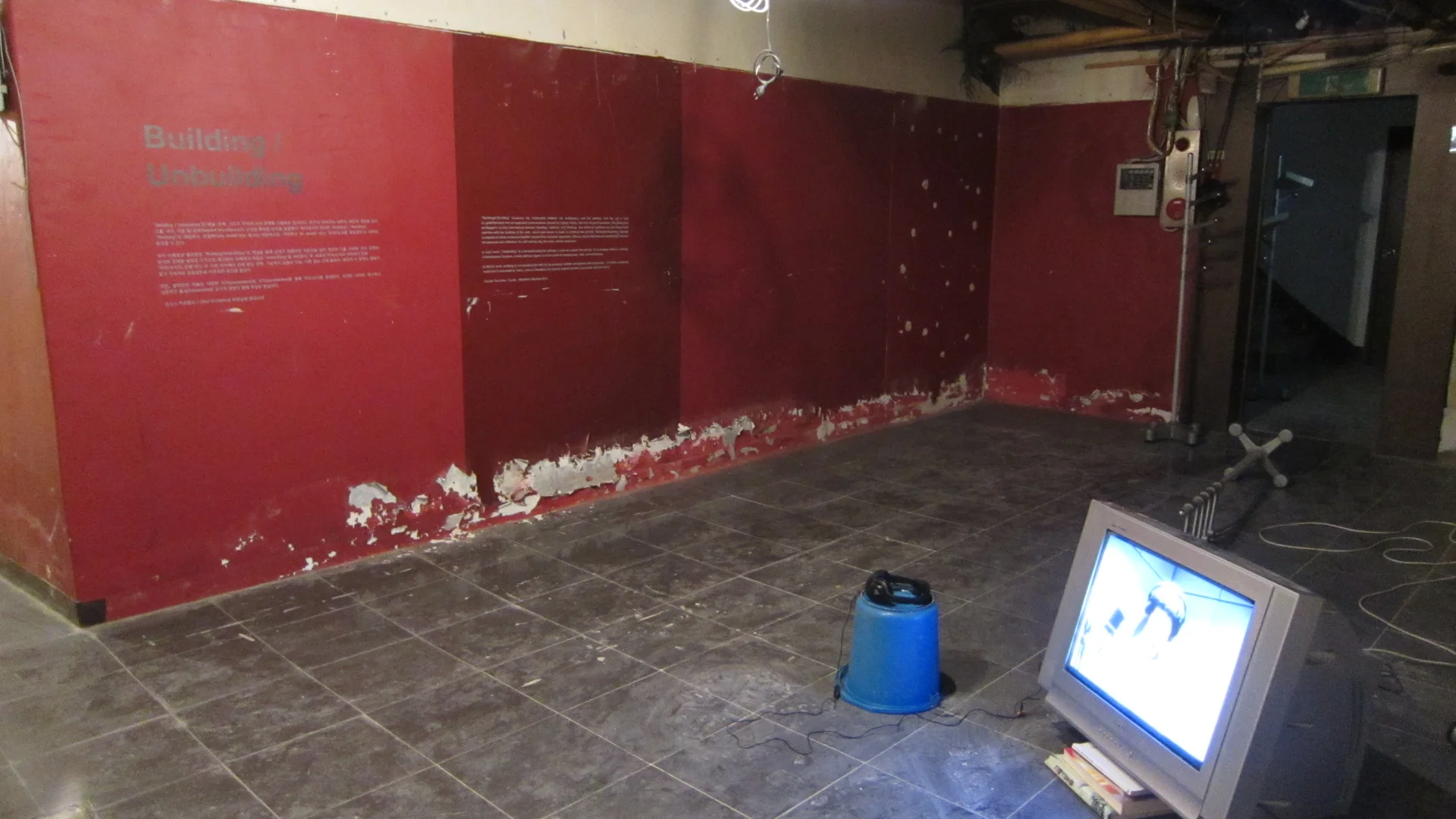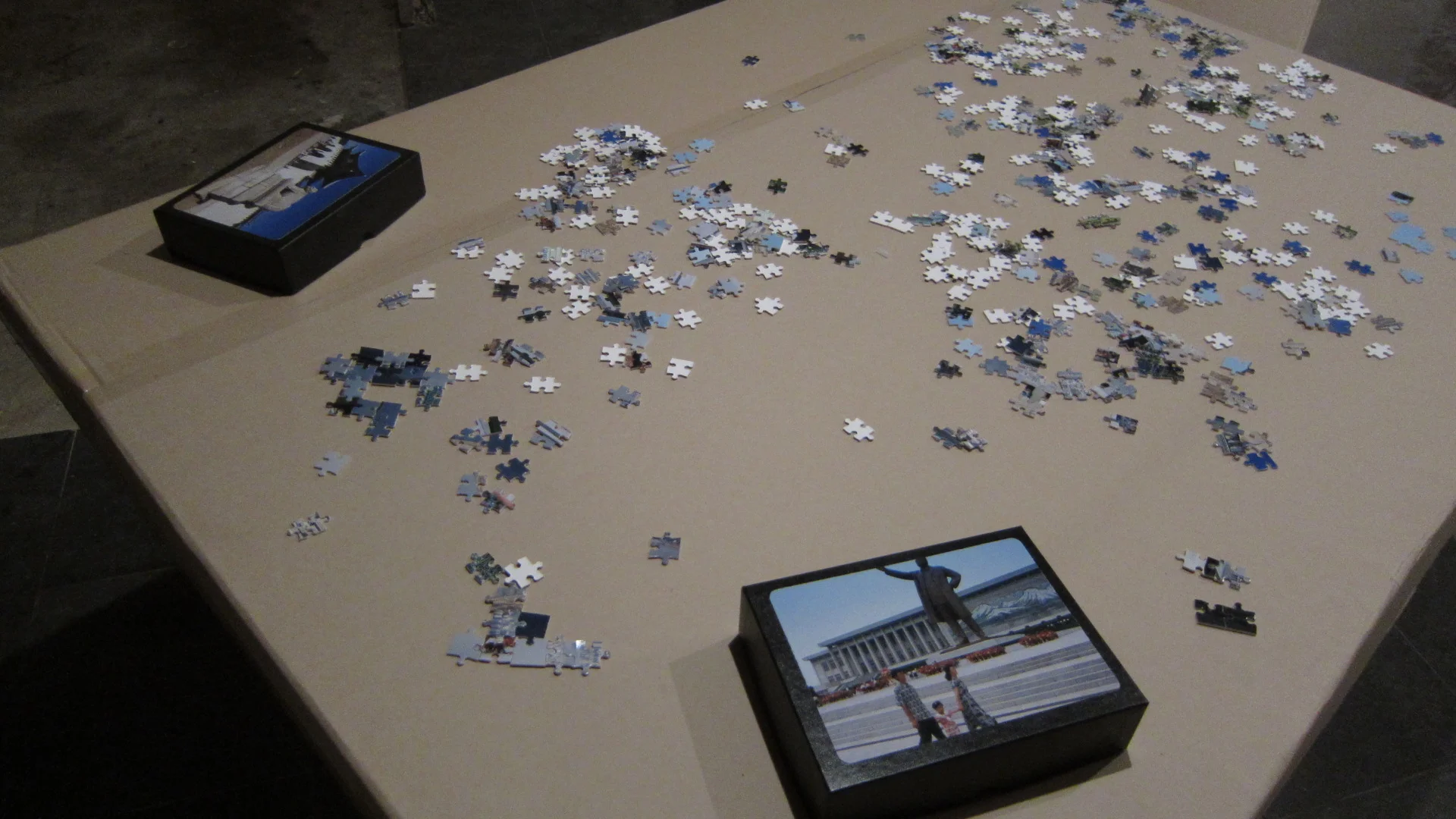Building/Unbuilding
Multi-media Installation
December 27 2012-January 31, 2013
Art Space 53, Seoul 53 Hotel, Seoul
A city is constantly changing in various aspects: history, culture, economy, and so on. This process of changing sometimes involves the destruction of old things, on which new things can be built. This does not go only for cities, but falls into a society or a state that can be represented by a city, and even into an individual on a small scale. At the base of every individual and modern city the traces of these changes are collected visibly or invisibly. The exhibition, of which title was borrowed from Heidegger's article Building, Dwelling, Thinking, shows both the making and braking of the self/city which keeps changing in a mixture of creation and destruction.
"Seoul 53 Hotel," where the exhibition is being held, is a small culture-oriented hotel. Renovated from an old hostel, the interior of the building is completely transformed from the first to the fifth floor, but the basement–where there used to be a bar–was left empty, or more accurately, left alone only with the memory of the past. Currently, the hotel is again creating an intangible history by collecting stories and traces of visitors from all over the world. The two artists, Charlie Han and Jaewook Lee, make another remodeling of this space that includes the past, present, and future: by adding the artistic function to the hotel, they build a new space once again. Han and Lee, who have actively worked with constant concern about city and space both in Korea and abroad, arrange their works in the same place of the 'hotel,' making the space and the works into a work of art.
Han, a 1.5 generation Korean American artist, has been preoccupied with identity and space. Recently, as a result of his examination of space., the artist extended a target area for investigating identity from the private to the public and general space. Most of his works are drawings of geometrical shapes with tape that newly create a new space out of general one. ("Building") Taking advantage of optical illusions, these figures, though themselves unchanged, look sometimes completed and other times destroyed according to the viewer's position and direction. It is with this coincidence of dissolution and completion that the artist aims to build the ultimate imaginary space where nothing is absolute.
Lee has worked on projects dealing with the traces of history, human destruction, and disasters hidden behind this eye-catching modern society. In this exhibition, by placing his works in a hotel basement which was left demolished in anticipation of a new change, the artist reveals the other side of a disintegrated and fragmented city. This meeting between an abandoned cellar and Lee's works looks very appropriate for representation of a disintegrated city, as well as of urban aspects that are not directly visible in reality. What is more interesting is that works of art displayed in a non-exhibition place are introducing a small but new change in the entire space. In this way, viewers will find that Lee's works, though supposed to talk about "unbuilding," are also working as a "building" element for a new urban space.
-Jang, Youjung, Director, A*Lab
Building/Unbuilding examines the relationship between art, architecture, and the self/city; here the self is both singular/personal and an expanded consciousness shaped by a group, nation, and even beyond boundaries. Borrowing from Heidegger’s circular interrelation between ‘building’, ‘dwelling’, and ‘thinking’, new works by Jaewook Lee and Charlie Hahn interfere with the dualities of the verb , which also means ‘to dwell’ or construct the self/ city. “Building/Unbuilding” attempts to expand on these modernist dualities beyond their symbolic opposition, offering new perceptions and relationships between the personal and collective, the self and the city, the molar and the molecular. In Lee’s work, “Unbuilding” is a deconstructing the self/city in order to re-enter the self/city. It is a strategy without a strategy, a functionless function, a body without organs in which space is formlessness, fluid, and continuous. In Hahn’s work, building is constructing the self/city by grasping multiple perceptions and perspectives. It is both a projected reality that is bounded by vision, and an interstitial and organic experience that is particular and interactive.
-Denise Carvalho (art critic)







